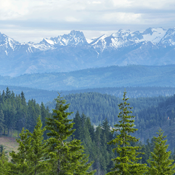
Tax Guide for Timber Yield Tax
Helping your business succeed is important to the California Department of Tax and Fee Administration (CDTFA). The taxes you collect and pay to the state help fund state and local services and programs that are important to you and your community.
Understanding the tax issues specific to the timber industry can be time-consuming and complicated, so it is important that you get the information you need in a timely and understandable way, helping you focus on starting and growing your business.
This guide is provided to help you better understand the tax obligations specific to the timber industry and provides detailed information on property tax implications on harvest trees in California.
How the Revenue is Allocated
Although the tax is administered and collected by the CDTFA, the revenue, after state administrative costs, is allocated back to the county of harvest, whereby the county auditor distributes the funds among the jurisdictions within the county to replace the property taxes that had previously been collected under the ad valorem tax system.
How to Use This Guide
The Getting Started page provides key resources related to registration, filing returns, account maintenance, and other important information you need.
The Industry Topics page contains specific topics important to the timber industry.
The Timber Advisory Committee page contains information related to Timber Advisory Committee, including public notices, meeting minutes & agenda.
The Harvest Value & Statistics page contains proposed and adopted Harvest Values Schedules, Timber Tax Statistics, and Timber and Production Zone Values.
The Resources page provides links to useful information, including special notices, other relevant industry guides, publications, statutory and regulatory information.
If You Need Help
See the How to Contact Us page for contact information. If you have suggestions for improving this guide, please contact us via email.
